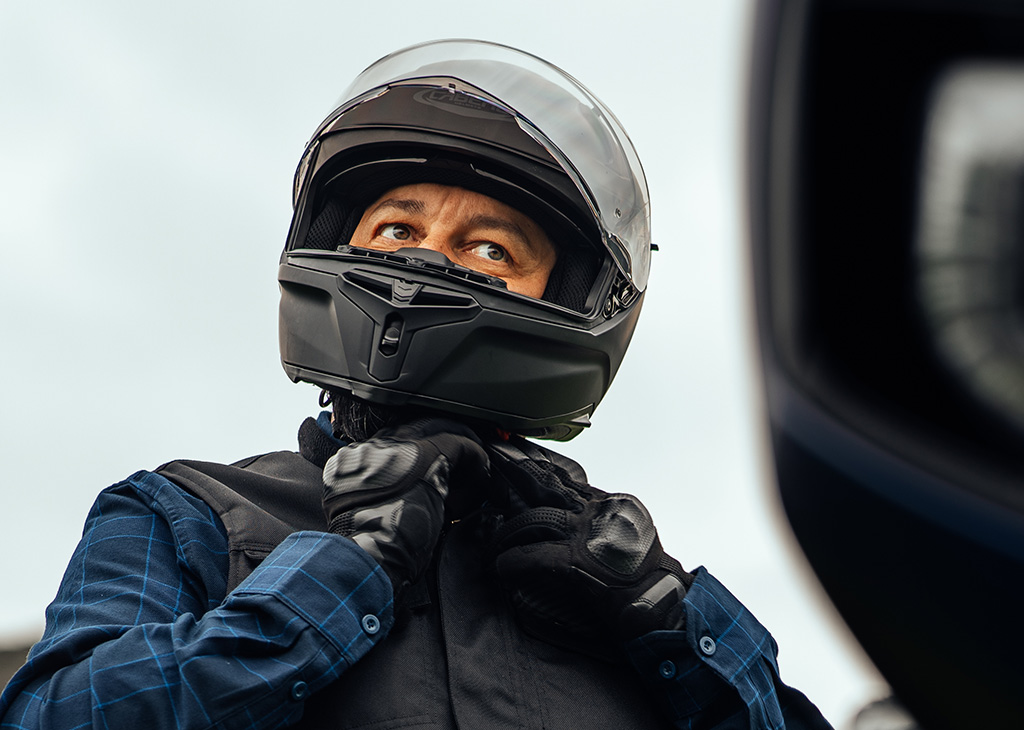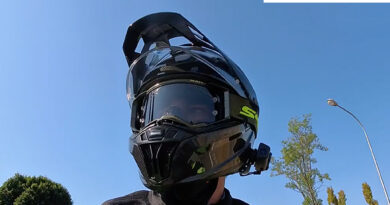Motorcycle helmet sizes: how to choose the right fit

Wearing a properly sized helmet is crucial for both safety and comfort when riding. Let’s find out together how to take the right measurements and choose the perfect motorcycle helmet for you.
Your safety and comfort on a motorcycle begin with choosing the right helmet. Whether you prefer a full-face, flip-up, or open-face model, in a solid color or with bold graphics, one thing remains essential: the helmet must fit perfectly.
Have you ever considered just how important a well-fitting helmet is? A properly sized helmet not only provides better protection in the event of an accident but also ensures optimal comfort—whether you’re taking a quick ride around town or embarking on a long-distance adventure.
Does finding the right size seem complicated? Don’t worry: this practical guide will help you choose the perfect fit.
How to Measure Your Head for a Motorcycle Helmet
The first step in choosing the right helmet size is to accurately measure your head circumference, as helmet sizes are based precisely on this measurement. Here’s how to do it:
- Use a flexible measuring tape;
- Wrap the tape around your head, positioning it just above the tops of your ears;
- Ensure the tape is snug but not too tight;
- Take note of the measurement.
Got your measurement? Now, let’s find the corresponding helmet size.
Motorcycle helmet sizes
Once you have your head circumference measurement, use the chart below to determine the best-fitting helmet size:
| Helmet Size | Circumference in cm |
| XS | 53/54 |
| S | 55/56 |
| M | 57/58 |
| L | 59/60 |
| XL | 61/62 |
| XXL | 63/64 |
Important: the correspondence between size and head circumference may vary depending on the manufacturer and model of the helmet. Always check the manufacturer’s specifications or consult a retailer before purchasing.
Try before you buy: why fit matters
While head circumference is a great starting point, we always recommend trying on the helmet before making a final decision. Here’s what to do:
- Wear the helmet for at least 15-20 minutes with the chin strap securely fastened.
- Make sure there are no pressure points or discomfort.
- Ensure a snug but comfortable fit. Remember, helmet padding compresses over time. If the helmet feels loose right from the start, it will likely become too large after some use.
- For flip-up helmets, test the fit with both the chin guard open and closed.
Helmet fit: what to check
Once you have the helmet on, run through these essential fit tests:
- Move your head in all directions: the helmet should stay in place without shifting, sliding, or covering your eyes or ears. If it moves too much, it’s too big.
- A new helmet should feel snug but not painful. It should fit uniformly around your head with a slight, even pressure.
- If you usually wear a balaclava while riding, test the fit with it on to ensure that the fit remains adequate.
A helmet of the wrong size can compromise both safety and comfort while riding.
- A helmet that is too large could move during riding or in the event of an impact, reducing protection.
- A helmet that is too tight could cause discomfort, headaches, and distractions.
This is why choosing the right size is essential for travelling safely and with maximum comfort.
Now that you know how to find the right fit, it’s time to choose your perfect helmet! Explore the full range of Caberg helmets now.
L’articolo Motorcycle helmet sizes: how to choose the right fit proviene da Caberg World.



